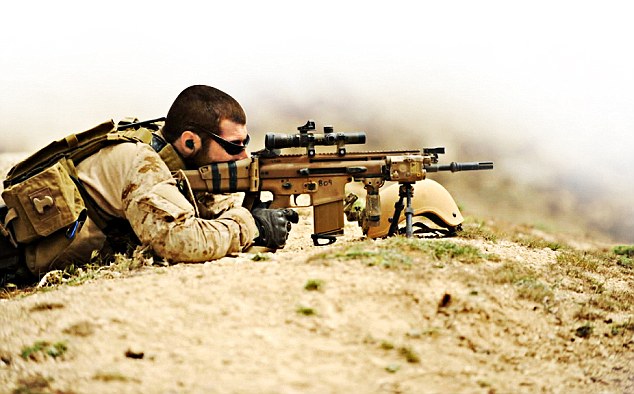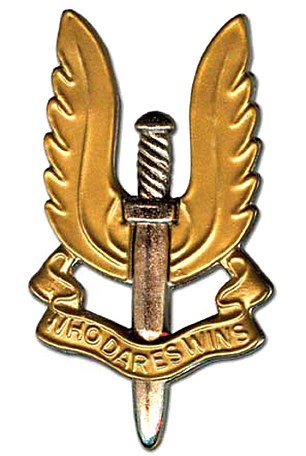Tämä löytyi samalla vahingossa. Sopii tämän keskusteluketjun aiheeseen. Ilmeisesti perustellaan etukäteen tulevaa 7.62 NATO kiväärin hankintaa.
Vastapuolen 7.62x53R ja 7.62x39 yhdistetään kätevästi tässäkin.
Tämä oli kyllä hieno lausunto:
The MoD said: ‘Our troops in Afghanistan use a variety of highly effective weapons that fire a range of ammunition. They primarily use 5.56 mm rounds fired from the
world-class SA80 A2 assault rifle and these have great power and accuracy.
---------------------------------------------------------------------
SAS to use bigger bullets to kill enemy outright after claiming 'shoot-to-wound' policy put their lives at risk
- Bullets upgrade recommended in top-secret report on SAS operations
- Authors describe clashes with Taliban who ignore bullet wounds and carry on shooting
By
Mark Nicol for The Mail on Sunday
Published: 00:55 GMT, 17 March 2013 | Updated: 00:55 GMT, 17 March 2013
The SAS are being issued with new ammunition designed to kill the enemy outright after they condemned a ‘shoot-to-wound’ policy that put their lives at risk.
The elite troops will now use bigger, heavier rounds to overcome Islamic insurgents who are determined to fight to the death.
The bullets upgrade – and a new range of rifles designed to fire them – were recommended in a top-secret report on SAS operations in Afghanistan. It called for a return to a ‘shoot-to-kill’ policy and for heavier rounds to be issued to troops. The report’s authors described bloody clashes with Taliban jihadists who managed to ignore their bullet wounds and carry on shooting.
On target: US Navy Seals use the powerful SCAR-H rifle which are designed to kill the enemy outright
The rounds currently issued as standard to SAS troops for their rifles are 5.56 mm calibre. In future, the troopers will be given 7.62 mm rounds – which are almost twice as heavy and designed to kill with a single shot.
Last night, a regiment insider said: ‘The shoot-to-wound policy was based on the assumption that once he was wounded an enemy combatant would stop fighting, and so would his comrades to give him first aid.
‘But this backfired against the Taliban. The 5.56 mm rounds did not take a big enough chunk out of them, allowing fanatical insurgents to keep on fighting despite their wounds. As a result, more SAS soldiers were shot and badly wounded.
‘The need for a heavier round was highlighted in the regiment’s post-Afghanistan report. Tests are now taking place on at least three rifles specially designed to fire the 7.62 mm rounds.
‘The difference in killing power between 5.56 mm and 7.62 mm is startling – the heavier rounds pack so much more of a punch.’
Rifles being tested at the SAS’s ranges in Hereford include the US-made Special Operations Forces Combat Assault Rifle (Heavy) Mk17 – known as the SCAR-H. It fires 7.62 mm rounds from a newly designed magazine that holds 20 rounds.
Accurate: Prince Harry with his SA80 rifle in Afghanistan
Powerful: The SCAR-H rifle fires 7.62mm rounds from a newly designed magazine that holds 20 rounds
Different length barrels are available for close-quarters battle and for longer-range engagements. The rifle is already being used by United States Special Forces units, including US Navy Seals, who participated in the mission to eliminate Al Qaeda leader Osama Bin Laden in Pakistan in 2011.
The best-performing rifle of those being assessed by the SAS will replace the regiment’s current standard issue weapon – the Canadian-manufactured Diemaco C8, which fires a 5.56 mm round and uses the standard Nato 30-round magazine. According to military experts, the C8 is a versatile weapon that can be fitted with a variety of scopes and aiming devices.
Other attachments include an underslung 40 mm grenade launcher.
The problem of 5.56 mm rounds lacking killing power in firefights is worse because the Taliban use 7.62 mm rounds in their AK-47 Kalashnikovs and Russian sniper rifles. The SAS’s report said the 7.62 mm rounds flew farther and with greater accuracy – giving the enemy a distinct advantage, especially in long-range engagements.
The bullets upgrade was recommended in a report on SAS (badge pictured) operations in Afghanistan
The only advantage to the 5.56 mm rounds is that, given their lighter weight, soldiers can carry more of them. Manufactured by BAE Systems in Crewe, they have a steel tip and core. The bullets are also lead-free to reduce environmental pollution. BAE has a £2 billion contract with the Ministry of Defence to produce these ‘ethical rounds’.
Tory MP Patrick Mercer, a former Army commander, said: ‘The 7.62 mm round is a good, meaty bullet and will drop your enemy with a single hit. The 5.56 mm cannot compete with it for stopping power and, according to many soldiers, the round has fallen short in Iraq and Afghanistan.
‘Insurgents who would have been fatally wounded by a 7.62 mm have been able to continue fighting and endanger the lives of our soldiers.
‘This is a positive step and I hope other regiments give consideration to returning to 7.62 mm rounds in the infantryman’s standard rifle. It could save lives and win battles.’
The MoD said: ‘Our troops in Afghanistan use a variety of highly effective weapons that fire a range of ammunition. They primarily use 5.56 mm rounds fired from the world-class SA80 A2 assault rifle and these have great power and accuracy.
‘For longer-range firefights, troops can use the general purpose machine gun, grenade machine gun, light machine gun and the 7.62 mm longer-range sharpshooter rifle.’
Read more:
http://www.dailymail.co.uk/news/art...ot-wound-policy-lives-risk.html#ixzz4bc0QfVEF






